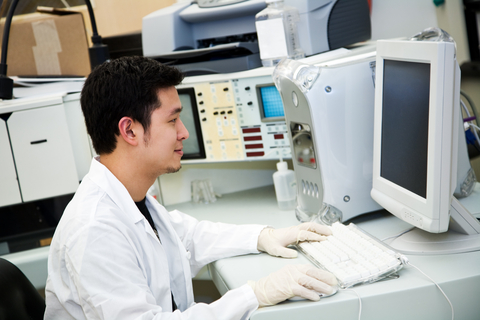Advanced radiotherapy improves lung cancer survival rates

A ten year University of Manchester and Christie NHS Foundation Trust study which used advanced radiotherapy techniques in patients with limited stage small cell lung cancer (SCLC) has achieved the best survival rates and lowest toxicity ever reported (University of Manchester, 2017).
The radiotherapy regimes, given either once daily or twice daily together with chemotherapy, tripled five year survival rates for the hard to treat cancer from 10% in studies conducted in the 1980s with chemotherapy alone to 35% in this study. Additionally treatment time was reduced by half for those in the twice-daily treatment group, three weeks with twice daily compared to 6.5 weeks with once daily radiotherapy. Five year survival was 34% in the twice daily group and 31% in the once daily group.
The study was funded by Cancer Research UK.
Study leader Corinne Faivre-Finn, a Professor of lung cancer radiotherapy at the University of Manchester, said the results were partly down to the use of modern radiotherapy techniques. The techniques include three dimensional radiotherapy and intensity modulated radiotherapy which shapes the radiation beams very precisely to mirror the outline of the tumour.
Patients were recruited at seventy three centres in eight countries, with the help of the European Organisation for the Research & Treatment of Cancer, the Canadian Cancer Trials Group, Spanish Lung Cancer Group, and the French Lung Cancer Group.
Patients on this study treated with advanced radiotherapy regimes also coped better with the side effects compared to other studies, including the landmark 1999 US Intergroup study, as severe side effects were less marked. Corinne Faivre-Finn said “I have followed previous studies done over the last 30 years, including the US Intergroup study, and have not seen better outcomes than this – so it’s very pleasing indeed.”
The most common side effects of this combined chemo-radiotherapy treatment were neutropenia, anaemia, nausea, anorexia and fatigue. Severe inflammation of the oesophagus led to hospitalisation in 20% of people in the study, compared to 34% in the US Intergroup study. Compliance rates to the concurrent chemo-radiotherapy treatment were high, with less than 10% of people not receiving any radiotherapy.
Corinne Faivre-Finn said “SCLC is a hard to treat cancer because it is associated with a rapid tumour doubling time and early dissemination outside the thorax. Despite excellent response to both chemotherapy and radiotherapy in most patients, the cancer will usually recur both locally but also distantly. However, the twice-daily and once-daily regimes we tested showed the best survival and toxicity rates compared to previously reported studies. I have followed previous studies done over the last 30 years, including the US Intergroup study, and have not seen better outcomes than this – so it’s very pleasing indeed.
“Radiotherapy is a hugely important part of treatment for limited stage small cell lung cancer as it helps to control the local disease in combination with chemotherapy. We hope this study will establish a standard treatment in limited stage small-cell lung cancer. Currently in the UK less than 20% of centres give twice daily radiotherapy routinely.”
The study, known as CONVERT (Concurrent once daily versus twice daily radiotherapy trial) was managed by the Manchester Academic Health Science Centre Trials Co-ordination Unit.
Anna Perman, Cancer Research UK’s senior science communications manager, said “Outcomes for people with lung cancer have been very poor for a long time, so Cancer Research UK has dramatically increased the amount it spends on research into this type of cancer. A crucial part of that work is finding the most appropriate way to give treatments like radiotherapy. Before this study began there had been few large clinical trials of this type in small cell lung cancer. We’re delighted that the CONVERT trial is making a real difference in how we treat lung cancer patients.”








